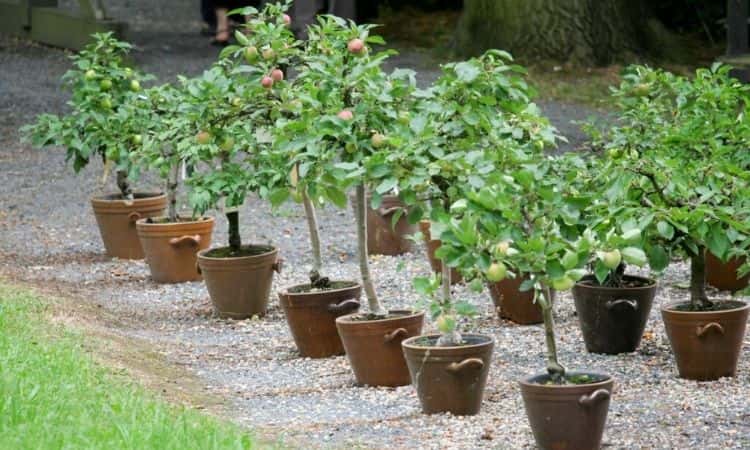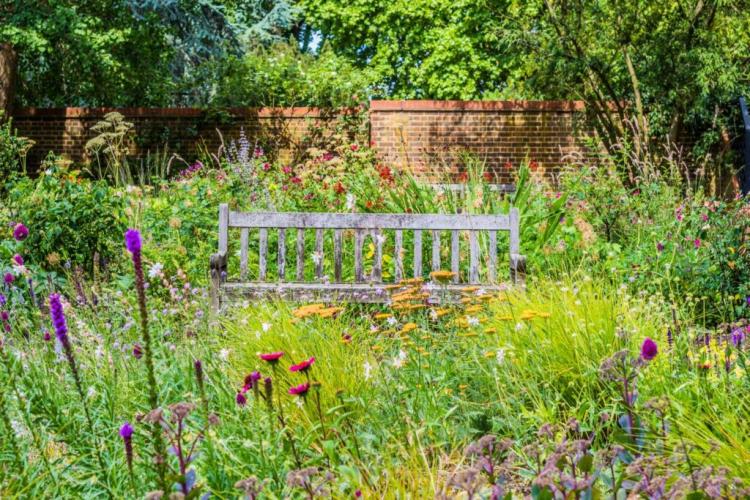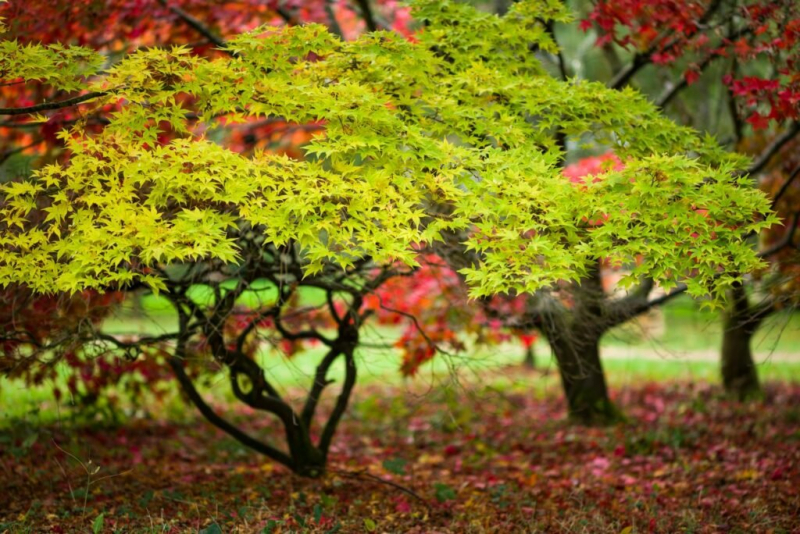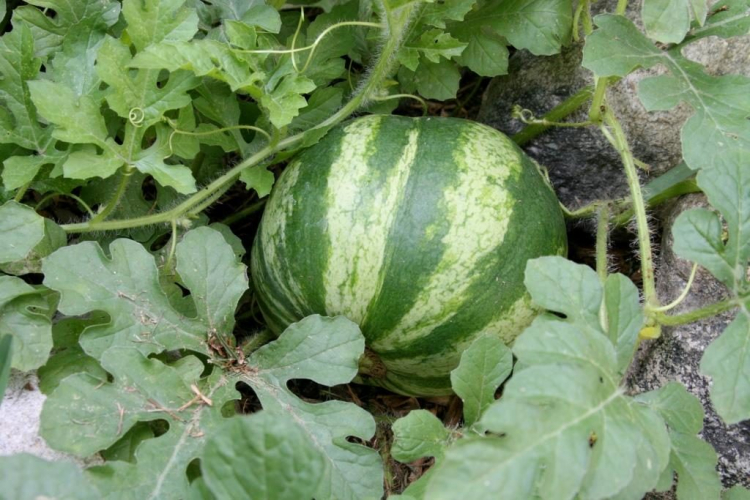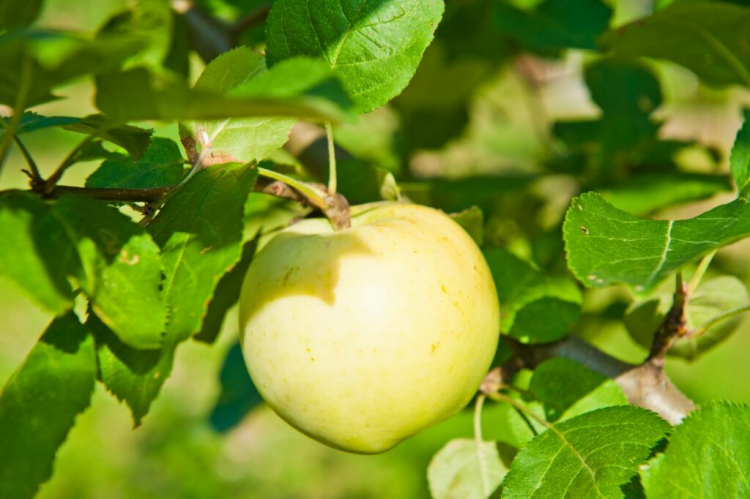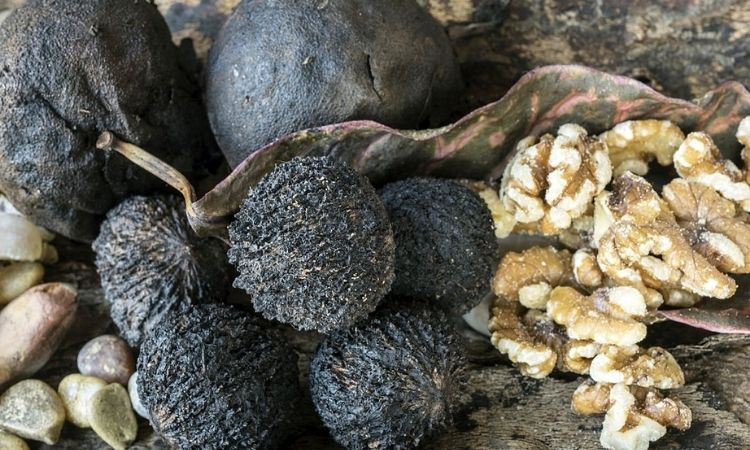Saving Water In The Garden: 6 Valuable Tips
Water is a scarce resource and its availability has not been optimal everywhere in recent summers. We show how to save water in the garden.
Many a district has been hit by a terrifying report in the past two years: drinking water treatment is no longer providing drinking water, there is an urgent need to save water, and in particular the irrigation of the gardens is to be severely restricted. In some amerikan cities, citizens were asked to help: they were supposed to keep the city trees from drying out by watering them. The Federal Environment Agency estimates that as climate change advances, competition for water as a resource will increase. Reasons enough to think about saving water in the garden.
In the following, we present six valuable tips that you can use to save water in the garden. Based on the design practice “Xeriscaping”, savings can be made through the right garden planning, plant selection, soil improvement, the right irrigation technology and of course through the use of rainwater. A lot of water can be saved, especially on lawns.
Xeriscaping
Table of Contents
As xeriscaping (“xerós” = Greek for “dry”, “scaping” from English “landscaping” = landscape design), sometimes substitutively called zero-scaping or xeroscaping, a principle of landscape and garden design is referred to, which is based on saving Irrigation is designed. The reason for the development was that it should be possible to design gardens in regions with little or no regular rainfall without the need for irrigation – because this is not only expensive, but also pollutes drinking water treatment or the groundwater in dry phases. This principle consists of seven building blocks.
7 building blocks of xeriscaping:
- Planning and design
- Soil development: adaptation to the needs of the plants
- Efficient irrigation
- Appropriate choice of plants and locations
- Mulching
- Reduced / adapted lawn areas
- Proper care
Some of the following tips also form part of the xeriscaping, whereby we have adapted and expanded them for the needs in the home garden.
1. Water-saving garden planning
The future water consumption of a garden can already be influenced decisively at the planning stage. The creation of shady areas with large-crowned trees is a plus point for saving water. The shadow cast reduces the evaporation of all plants that grow under the tree. Covering the soil basically saves water, since uncovered soil evaporates much more water than most plants. Planning ground cover in bedding areas from the outset or determining the distribution of bark mulch ensures that later watering has to be less frequent. Our organic pine bark is not only effective against evaporation, but also decorative. The natural pine bark mulch is sustainably produced in the USA and protects the soil from erosion, weeds and dehydration.
You might so like: Garden Sage Varieties: Aromatic, Hardy Or As An Ornament
Since lawns require a lot of water, it makes sense to reduce them to the actual need. Lawns should serve as usable areas for leisure activities such as ball sports, sunbathing or reading, but not be a design element that nobody enters.

Xeriscaping creates blooming gardens in arid regions – without irrigation
2. Water-saving plants
There is a wide range of easy-care plants that can do very well with little water. All rock garden plants are very drought tolerant and their use helps to save a lot of water. However, this does not mean that only frugal plants are allowed to find their way into your garden: it is more about choosing the plant according to the existing soil. If your soil is rich in humus and rather loamy, it can store a lot of water. So you can also choose plants that are more thirsty. If your soil is rather sandy and poor in humus, you should choose appropriate plants in order not to have to go around the house several times a day with the watering can and pour out thousands of liters of water in the summer.

Planting adapted to the soil and location saves water and labor at the same time
Group the plants in the beds strictly according to their needs: drought-loving sun worshipers in one bed, those in need of shade and moisture-loving in another. You can also improve the soil in parts of the garden so that thirstier plants can settle in. In this way you avoid unnecessary watering in places where it is not needed and take a lot of work off yourself.
3. Improve soil water retention
Much water is lost when rain or poured water is not kept in the ground and simply drains into the subsoil to unreachable depths. Permeable soils with many large pores cannot hold water well – this applies to soils with a high proportion of sand. Clay and loam soils have a high proportion of swellable clay minerals that can absorb and store water. The introduction of clay can therefore improve the water retention capacity. However, humus, which absorbs a lot of water, is even more effective in water storage.
Increasing the humus content of the soil is also easier than spreading large amounts of clay outdoors. With the right humus management, you can enrich the soil with humus. This means that more rainwater is stored in the ground, you have to water less and there is less water loss. A particularly good tip here is mulching all unplanted areas with bark mulch or similar material. This “surface composting” leads to the build-up of humus and shadows the soil so that less water evaporates.
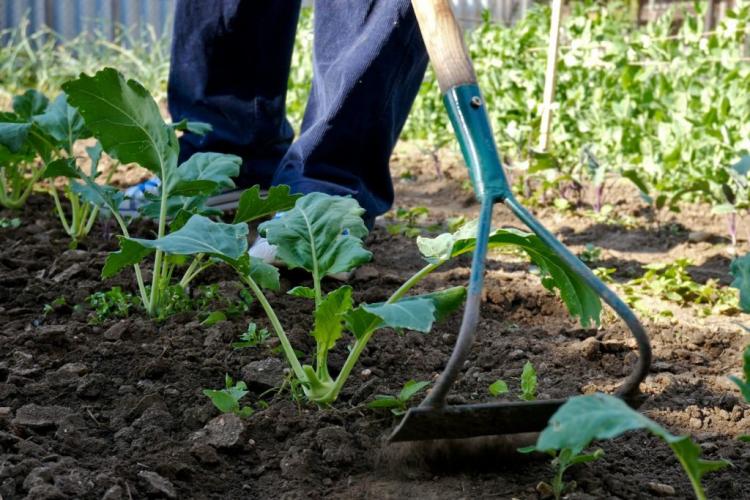
Chopping in the vegetable garden removes weeds and saves water
4. Use rainwater
Rainwater is the better irrigation water due to its pH value and the lack of calcium. Collecting and storing it makes high-quality water available that you don’t even have to pay for. In addition, the drinking water treatment is spared. A sufficiently large collection container can help you through many a dry phase. If you have a large garden and don’t want to set up a number of rain barrels, you should aim to collect rainwater in an underground reservoir.
In this, water can be collected in the cooler, rainier seasons, which is then pumped up and used in summer. The construction of such a drainage with rainwater harvesting is already a larger project, for which you should seek advice and help from experts.
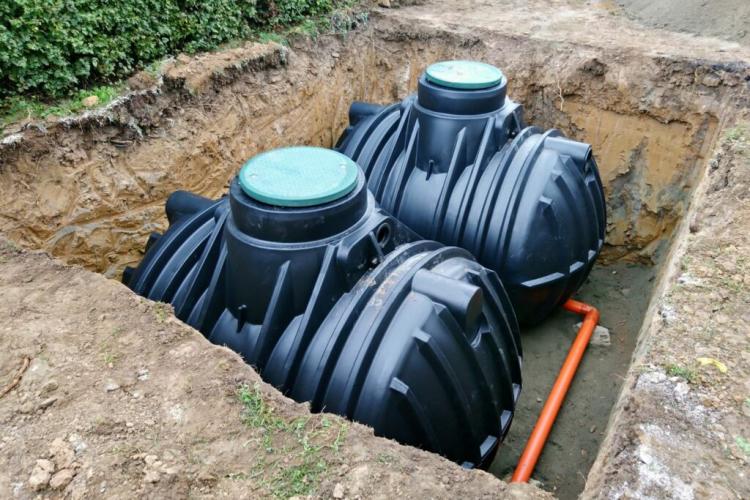
If you want to store large amounts of rainwater, you can do so in tanks underground
5. Water plants properly
A lot of water can also be saved when watering. To do this, you have to ensure that as little liquid as possible evaporates directly instead of penetrating the soil and being absorbed by plants. Many people are familiar with watering at cool times of the day, preferably in the evening. And the watering device used also makes a difference: sprinklers and rotary sprinklers, which sometimes also finely atomize the water, allow more water to evaporate.
The most effective irrigation is achieved with drip hoses that deliver water in drops just above the ground. You can also promote the rooting of your plants via the frequency of watering: If you water a little less often and for longer, you force the roots to search deeper in the soil for water. The resulting good rooting makes the plants more drought-resistant.
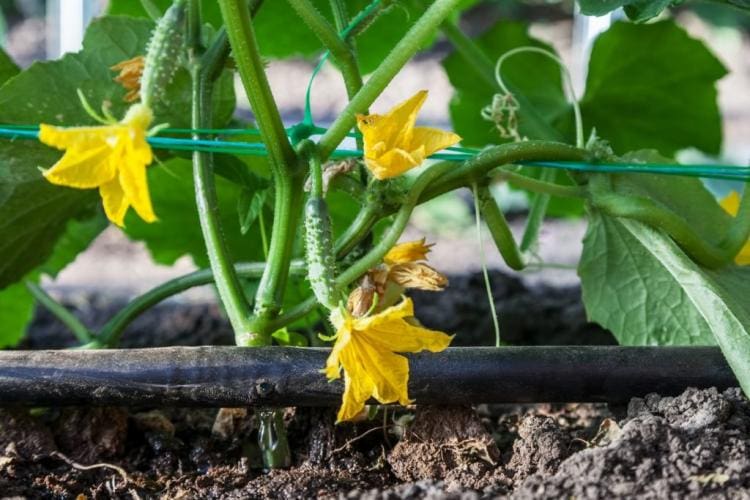
Drip irrigation is the most efficient irrigation technique
6. Irrigate the lawn to save water
As already mentioned above, classic lawns consume a lot of water if they are to remain lush green even in dry phases. A reduction in the lawns here results in extensive water savings. But even those who do not want to do without large lawns will find possibilities: In dry locations, specially composed seed mixtures should be used. The standard seed mixture RSM 2.2.2 (grass for use in arid areas), for example, is designed to survive in arid areas as well. This is achieved by including types of grass, some of which require only a quarter of the water required by classic lawn grasses and which remain green when other plants have long since given up. You can find out more about the correct sowing of lawns in this article.
A lot of water can also be saved through the correct adaptation of care in summer. It is important that the area is adequately supplied with potassium, because this is a crucial factor in the water balance of the lawn. A lawn fertilizer with a sufficiently high potassium content is therefore mandatory in dry locations. This is why our organic autumn lawn fertilizer also contains a good portion of potassium to provide your lawn with optimal care.
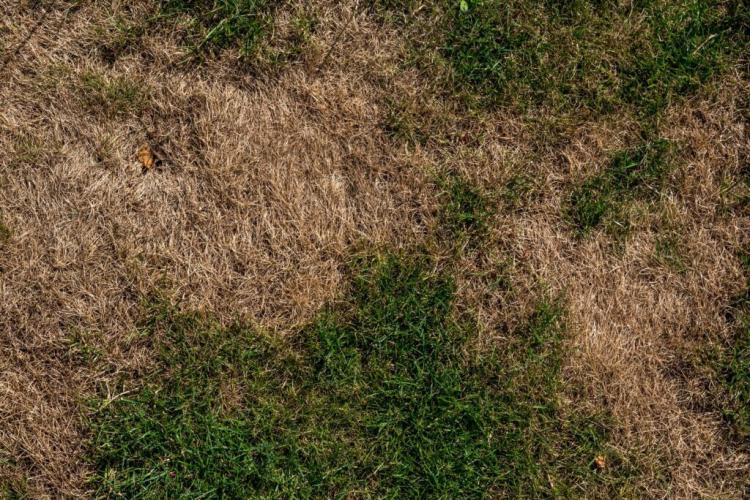
Dry grass in summer is half as wild: the plants sprout again when it rains
Care should be taken with mowing in hot, dry summers. Never remove more than half the height of the stalk in one go and do not mow below four centimeters. The best time to mow is in the evening, when it is a little cooler and more humid.

